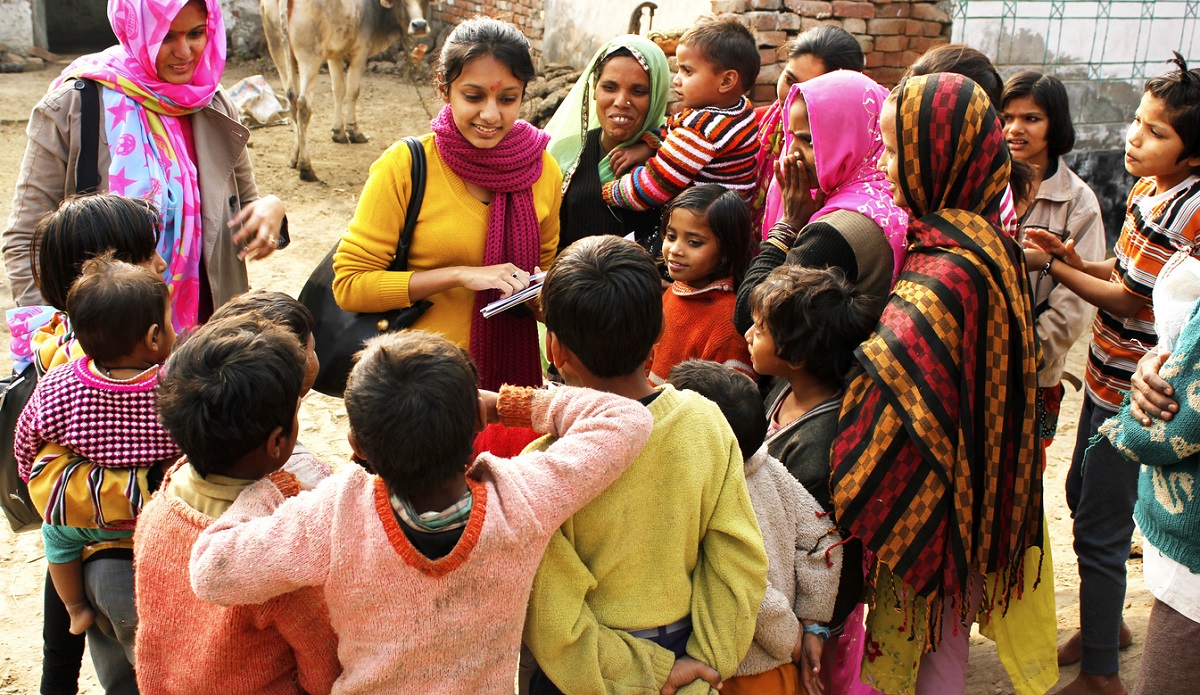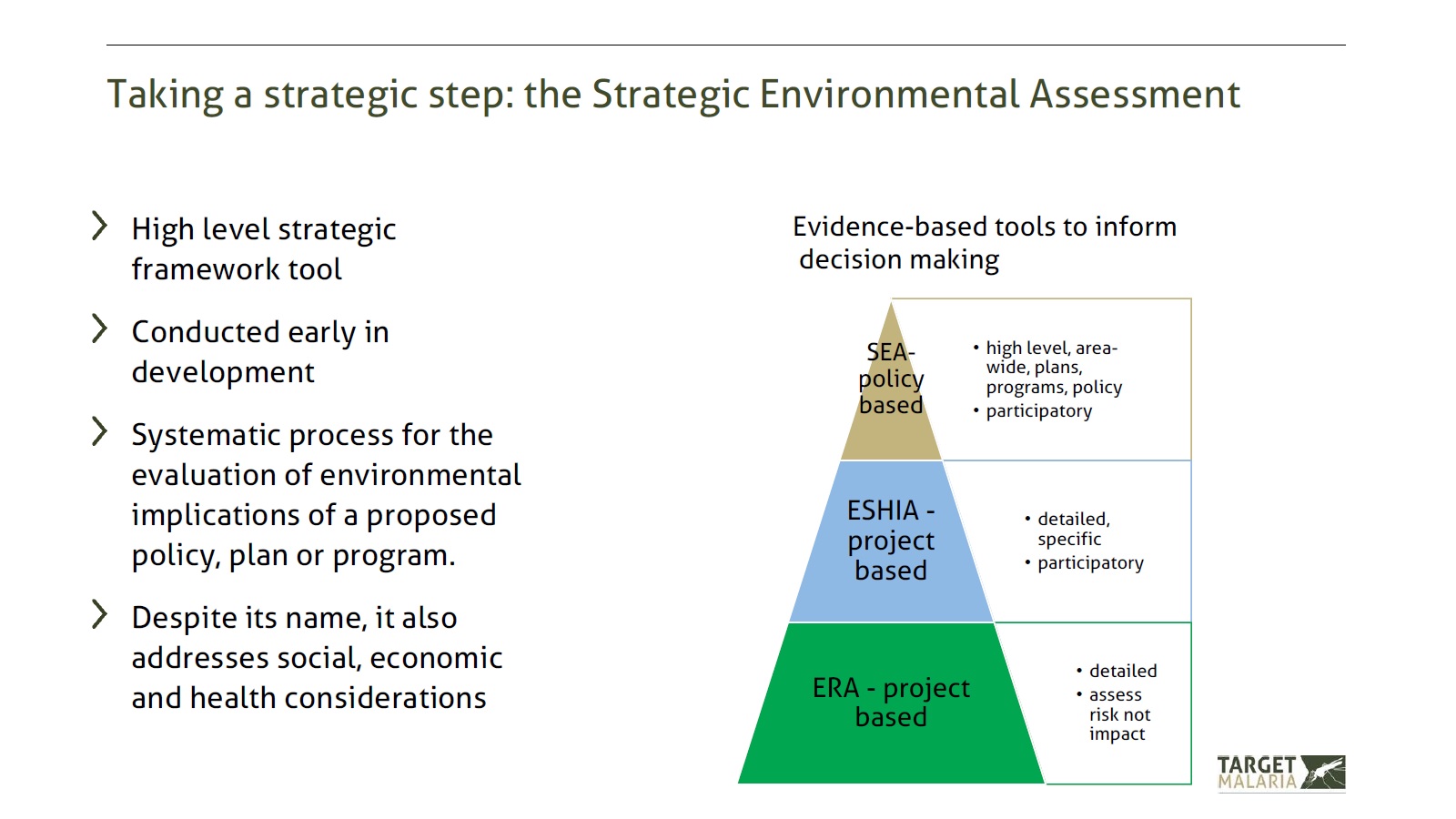Assessing the Socio-economic and Health Impacts of Emerging Technologies
| |
ISAAA Inc., the Outreach Network for Gene Drive Research, the ISAAA network of Biotechnology Information Centers, conducted the webinar Integrating social, economic and health aspects into the decision-making process on July 28, 2022, via Zoom. It is the third and final part of the 2022 Gene Drive Webinar Series. The webinar aimed to give an overview of the different dimensions of gene drive impact and risk assessments, including environmental and socio-economic aspects. This article provides an overview of the topics discussed during the event.

Differentiating impact assessment from risk assessment
According to Delphine Thizy, Target Malaria’s Stakeholder Engagement Senior Advisor, assessing gene drive’s potential social, economic, and health impacts should be conducted on a case-by-case basis since the factors are dependent on the specific project being carried out. She also recommended that impact assessments and environmental risk assessments can be done in parallel to complement each other. Thus, it is important to understand the difference between the two forms of assessment.
Risk assessments, particularly environmental risk assessments, are often required by a regulatory framework. The purpose is to identify and explore outcomes of possible risks brought about by a new or existing technology focusing on environmental aspects. The Cartagena Protocol on Biosafety (CBP) states in Article 26 that under its domestic measures for implementation, the Parties “may take into account, consistent with their international obligations, socio-economic considerations arising from the impact of living modified organisms on the conservation and sustainable use of biological diversity, especially with regard to the value of biological diversity to indigenous and local communities.” Article 23, on the other hand, focuses on public awareness and participation.
Although Article 26 talks about the impact of the technology on biological diversity, its scope can be extended to cover socio-economic impact assessments. While risk assessments are required by frameworks, impact assessments are usually part of an environmental code and apply to different projects and not necessarily specific to living modified organisms. These assessments have a defined structure for public consultation that follows international standards and aims to investigate both positive and negative impacts of the project that includes not only the environmental factors but also social, economic, health, and sometimes human rights factors.

The dimensions of socio-economic considerations
Dr. Krishna Ravi Srinivas, Senior Fellow & Consultant Research & Information System for Developing Countries in New Delhi, India, enumerated the dimensions of socio-economic considerations that are taken into account in the biosafety decision-making process as adopted by the CPB. These are:
- Social dimension – social acceptability, changes in communities’ rights, food security, gender impacts, sustainable development among others.
- Economic dimension – changes in agricultural production and farmers incomes, crop loss, employment loss or gain, changes in export and industrial trends, and the like.
- Cultural/ethical/religious dimension – ethical and moral concerns, cultural aspects and practices, erosion of indigenous technology and knowledge, religious concerns.
- Ecological-related dimension – loss of genetic and agri-diversity, weed resistance, greenhouse gas emission, soil contamination, and others.
- Health dimension – food safety, nutritional needs, and public health impact.
Many countries have already adopted the conduct of socio-economic impact assessments in consideration of the effects to the five dimensions stated above. However, certain challenges have been encountered, beginning with the lack of a universal methodology that these countries can follow which resulted in the use of different parameters during the conduct of impact assessments. Countries need to build their respective capacities to perform socio-economic impact assessments to study long-term impact assessments of emerging technologies like gene drive. Yet doing so in an individual manner may pose problems in the future. Hence, coordinated and harmonized methods guided by a common policy based on existing regulations and frameworks may prove more effective in the long run. Other challenges include determining the order socio-economic priorities to address since different stakeholders have different priorities, and whether socio-economic impact assessment should be considered as a supplementary or main tool to complement environmental risk assessments.
Setting aside the challenges, socio-economic impact assessment is still an important tool in evaluating the effects of technologies that are proposed to be implemented to realize its benefits and opportunities. It enhances the credibility of the process and provides the opportunity for the public to participate in the decision-making process by having their views and preferences known to other stakeholders, and are well-suited to consider norms and values that cannot be assessed by environmental risk assessments and cost-benefit analyses.

Conducting socio-economic and health impact assessments of gene drive organisms
Currently, there has been no impact assessments done for engineered gene drive organisms. However, should the time come to do so, Delphine Thizy emphasized that the conduct of impact assessment involving gene drive organisms begins with knowing its context since each situation is different and assessments need to be done on a case-by-case basis. Assessments will be specific to a research protocol for a specific construct in a specific environment. It is also important to consider the alternatives to the use of gene drive and the impacts of that situation. The conduct of the analysis involves evaluating the burden of the current situation, identifying the available tools to help solve the problem and their respective impacts, and how effective these tools are. Other factors to be considered are alternative interventions not involving gene drive organisms, and the outcome if there is no intervention at all.
When identifying gene drive impacts, there are three types of impacts to consider and it is important to tell them apart from each other:
- Impact of the gene drive organism. This is any impact related to the presence of the construct on the target population. This could be impact related to the presence of the construct on the target population and how it can possibly change the environment and the socio-economic setting.
- Impact of the protocol activities. These are related to the protocol implementation, i.e. the presence of team members, their monitoring activities, or meetings with the local community. These activities can have an impact on people in the area.
- Impact of the outcome. This refers to disease reduction, increased resilience of a species, eradication of an invasive alien species or other expected outcomes of the gene drive.
A successful conduct of the impact assessment will complement the environmental risk assessment for gene drive organisms. In the case of Target Malaria, they use a high-level strategic framework tool to help create a policy, plan or program and identify environmental, socio-economic, and health impacts prior to the development of a construct and a protocol as seen in the image below which was presented by Delphine Thizy during the webinar. The framework allows the researchers to have an overview of the situation before obtaining the impact assessment data.

Discussions on socio-economic and health impacts are important especially as any technology that will be applied will have an impact on people, their livelihood, their culture and their day-to-day lives, whether directly or indirectly. Impact assessments bring a whole new perspective to complement risk assessments. These assessments are important to gene drives because there is much to know about the technology, and the public needs to become aware of all possible outcomes it can bring. More interactions with the communities can bring in more data that can help technology developers, regulators, and policy makers determine whether gene drive is the best option to help fight vector-borne diseases, control invasive species, or increase the resilience of a species.
To get the latest updates about gene drives, subscribe to the Crop Biotech Update to receive the Gene Drive Supplement released every month. Visit ISAAA Webinars to watch episodes of the 2021 and 2022 Gene Drive Webinar Series.
| Newer Post | Archive | Older Post |
Science Speaks is ISAAA Inc.'s official blog. Weekly blog articles, authored by ISAAA writers, partners, and invited contributors, aim to help share, disseminate, and promote scientific knowledge and its vital role in achieving global agricultural sustainability and development. Your support to Science Speaks will help us achieve this goal. You can help us by donating as little as $10.

